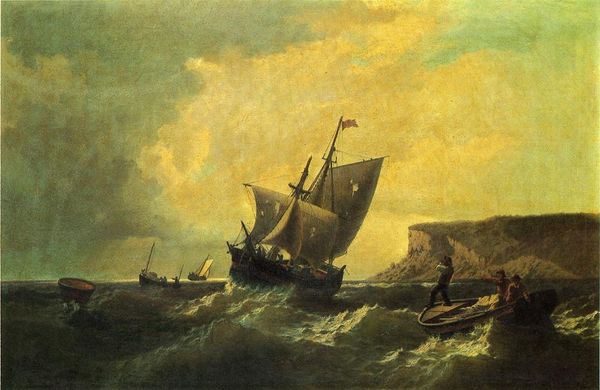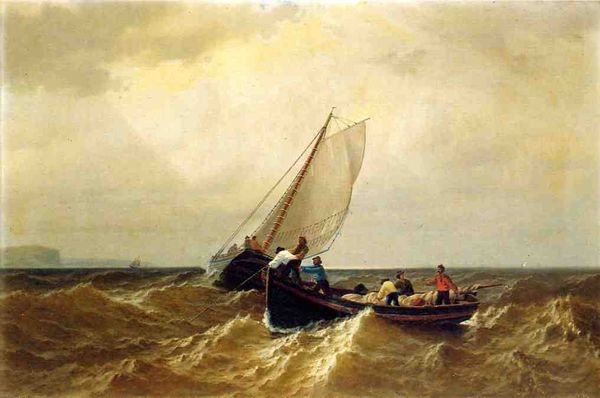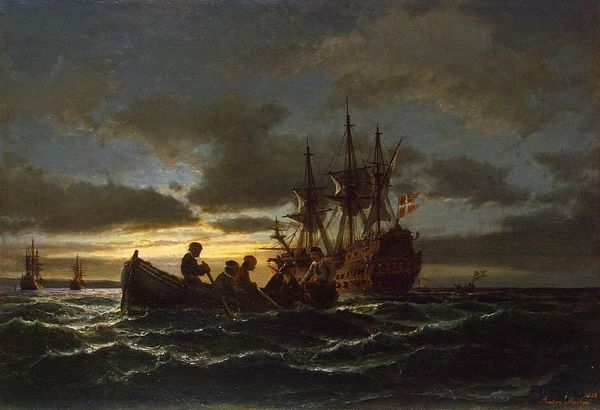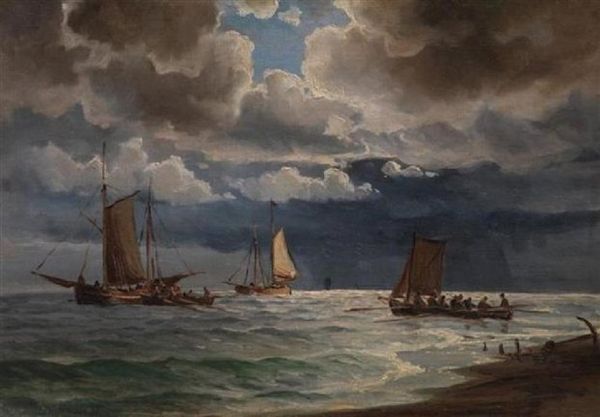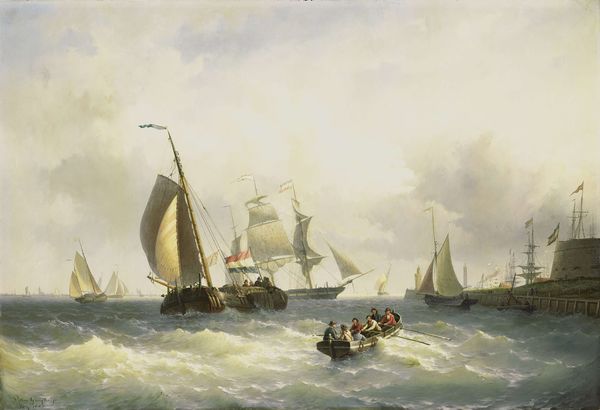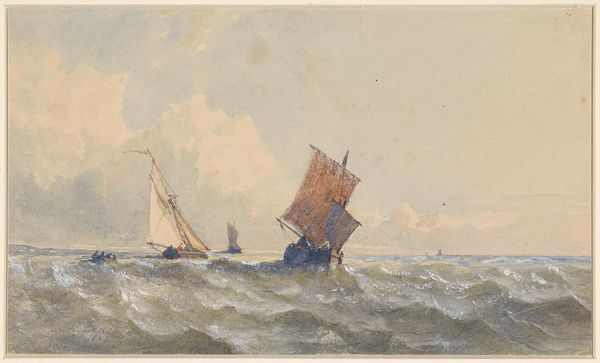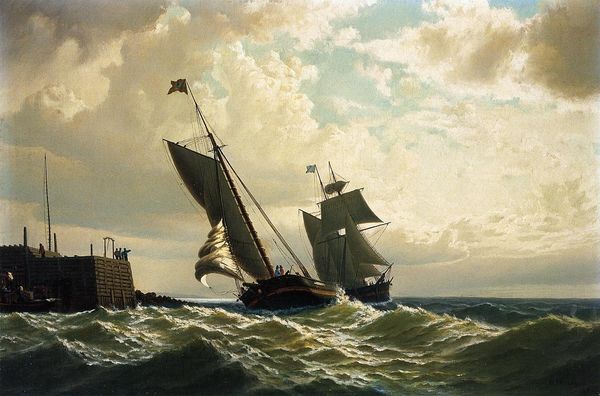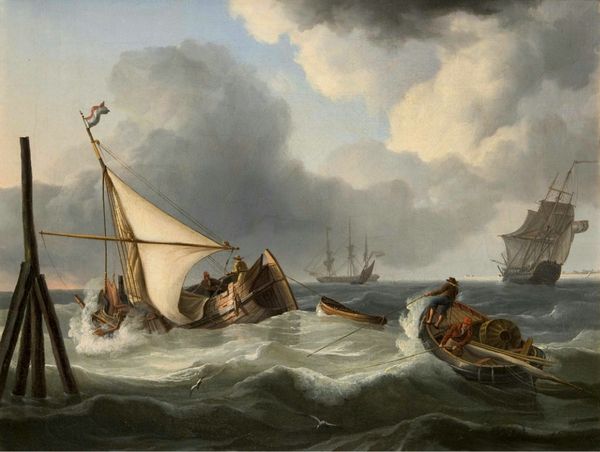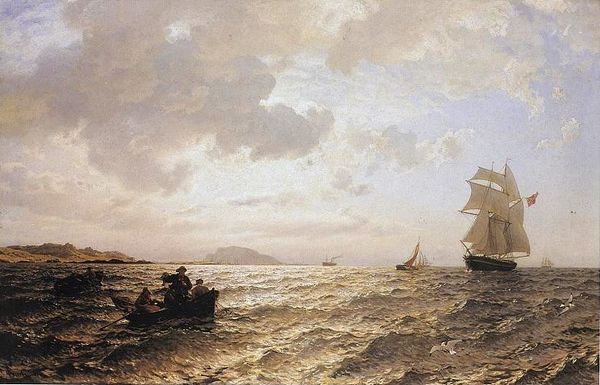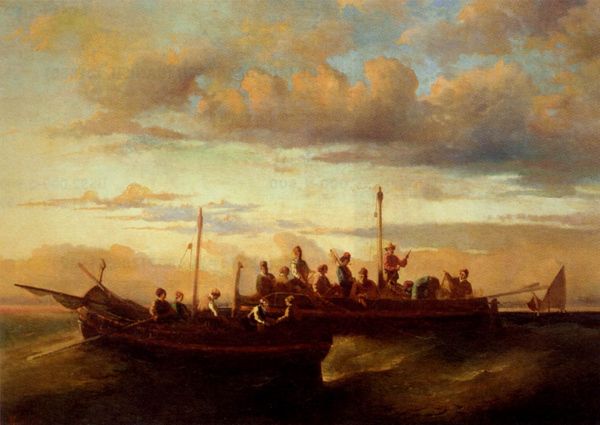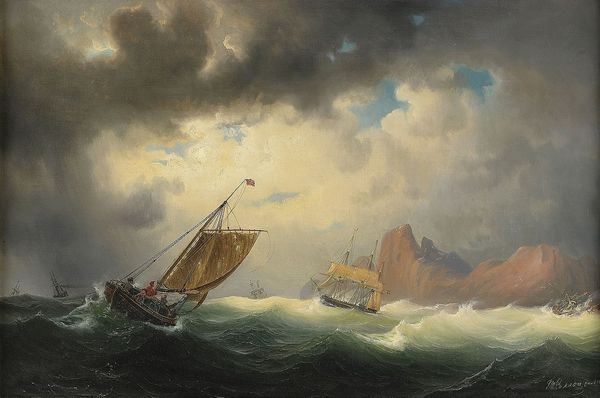
Copyright: Public domain
Curator: I’m struck by the tangible struggle depicted here, the physicality of these men against a formidable ocean. Editor: Indeed. What we’re looking at is "Fishing Boats on the Bay of Fundy," an 1861 oil painting by William Bradford. Curator: Bradford really captures the unforgiving nature of maritime labor. The roughness of the sea is palpable, almost as if the canvas itself is churning. I’m curious about his specific color choices—the way he mixes the pigments to mimic the waves. The facture is so gestural! Editor: The socio-economic dimensions are also at play. Think about the cultural context: shipbuilding in this region of Canada during that time was central not only to its economy but its social identity, and paintings such as this served to depict an honest reflection of the dangers. It’s a moment of the sublime. Curator: Sublimity through honest depictions of physical labor and materiality! Consider how these boats were likely made: hand-hewn, shaped through intense physical effort. It’s this relationship between manual labor and the finished product that I find particularly poignant. This form of direct contact and honest use of the elements resulted in these gorgeous boats that are also artworks, in their own right! Editor: And the art market definitely played a role. Demand from urban collectors fueled Bradford’s trips and works like these. Consider this, this painting offers a romanticized view of the working class for those far removed from that reality. We must question if it truly represents or if it further obscures this dangerous means for survival. Curator: That’s a great point. It's about understanding what these images mean, materially, to those creating and consuming them. A deeper inspection into production makes clear to whom this artwork caters. Editor: Precisely. It forces us to consider the ethics and representation of labor within art and larger society. Curator: Thanks to this discussion, I now have a richer comprehension of the historical context and the material components used by William Bradford in 1861. Editor: Yes, the dialogue is useful for unpacking cultural history!
Comments
No comments
Be the first to comment and join the conversation on the ultimate creative platform.
